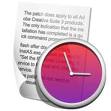This is weird. Google+ had a photo editor that
used Flash, worked in any desktop browser and it was powered by Picnik. Google changed this and switched to a new photo editor that's based on the Snapseed mobile app, but the new version doesn't use HTML5. It's a Native Client app.
That's the reason why the new photo editor only works in Chrome. No other major browser supports Native Client and it's likely that won't change in the near future. This is probably the first feature of a Google web app that uses Native Client and I have the feeling that many others will follow.
So what's new? The new photo editor has most of the features of the Snapseed app, so it's likely that Snapseed has been ported to Native Client.
"Auto Enhance already makes the photos you add to Google+ look great. Now you can customize and fine tune these adjustments if you have a different look in mind. Selective adjust lets you make edits to specific parts of your image, so you can make that summer sky look even more blue without affecting the beach in the foreground. Filters like Vintage, Drama, Retrolux or Black and White give your photos a new look. Add the finishing touch with a frame."
I've noticed that more and more Chrome apps and extensions use Native Client: Google+ Photos app, the Office Viewer and Editor. Porting mobile apps to Native Client doesn't make the web better because these apps only work in Chrome.
"The Native Client open-source technology is designed to run native compiled code securely inside browsers. Native Client puts web applications on the same playing field as local applications, providing the raw speed needed to compete with traditional software like 3D games, video editing, and other applications. Native Client also gives languages like C and C++ (and eventually others as well) the same level of portability and safety that JavaScript provides on the web today,"
explains Google.
Native Client is great for apps that can't be built using web technologies, but it looks like Google starts to rely too much on Native Client. Google managed to build a powerful office suite using web apps that work in any modern browser and it now ports a mobile Office editor to Native Client. There are many HTML5 photo editors that work well, but Google chose to port a mobile photo editor to Native Client. I think that's the wrong path to follow. Chrome was supposed to make the web better, not to become an operating system that runs its own apps.






